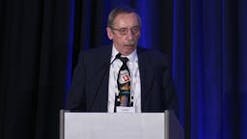Defined broadly, traveled work refers to tasks, components or assembly processes that are not completed at their originally planned stage or location within the production line. Instead, these items need to be moved to a different stage or location for completion. This movement can be due to a variety of reasons such as quality issues, missing components, production bottlenecks or errors in the manufacturing process.
“A System Dynamics Model of Traveled Work,” written in 2015 by Boeing engineers Benjamin J. Brelje and Gabriel A. Burnett, defines traveled work:
“In commercial airplane manufacturing and assembly, ‘traveled work’ refers to jobs which are delayed and/or completed in a factory location other than what was originally planned. Traveled work takes longer to complete in terms of labor hours, and incomplete work can interfere with operators’ ability to complete other planned work causing cascading delays. Reducing or eliminating traveled work is often targeted as a cost reduction measure.”
Traveled work can lead to delays in production and quality issues. Notably, production of the 787 Dreamliner was impacted in part due to traveled work.






